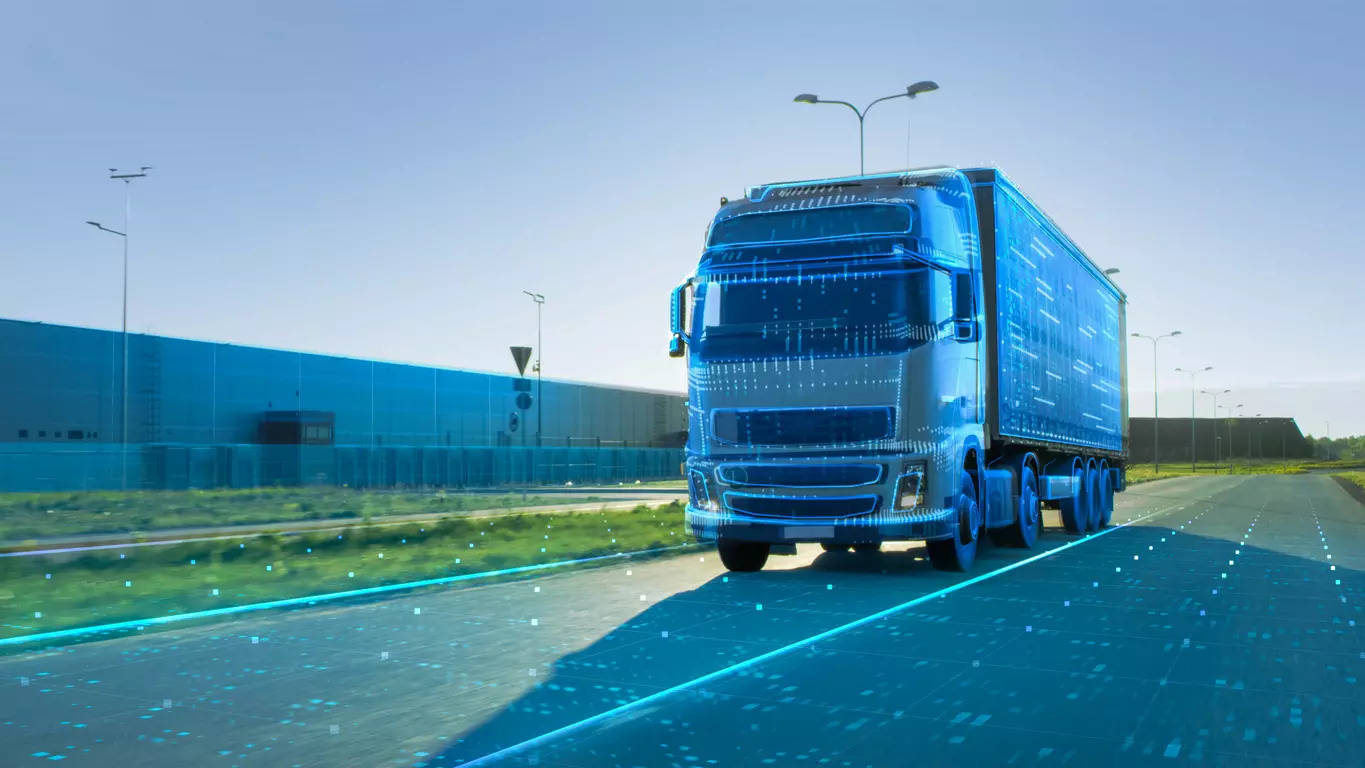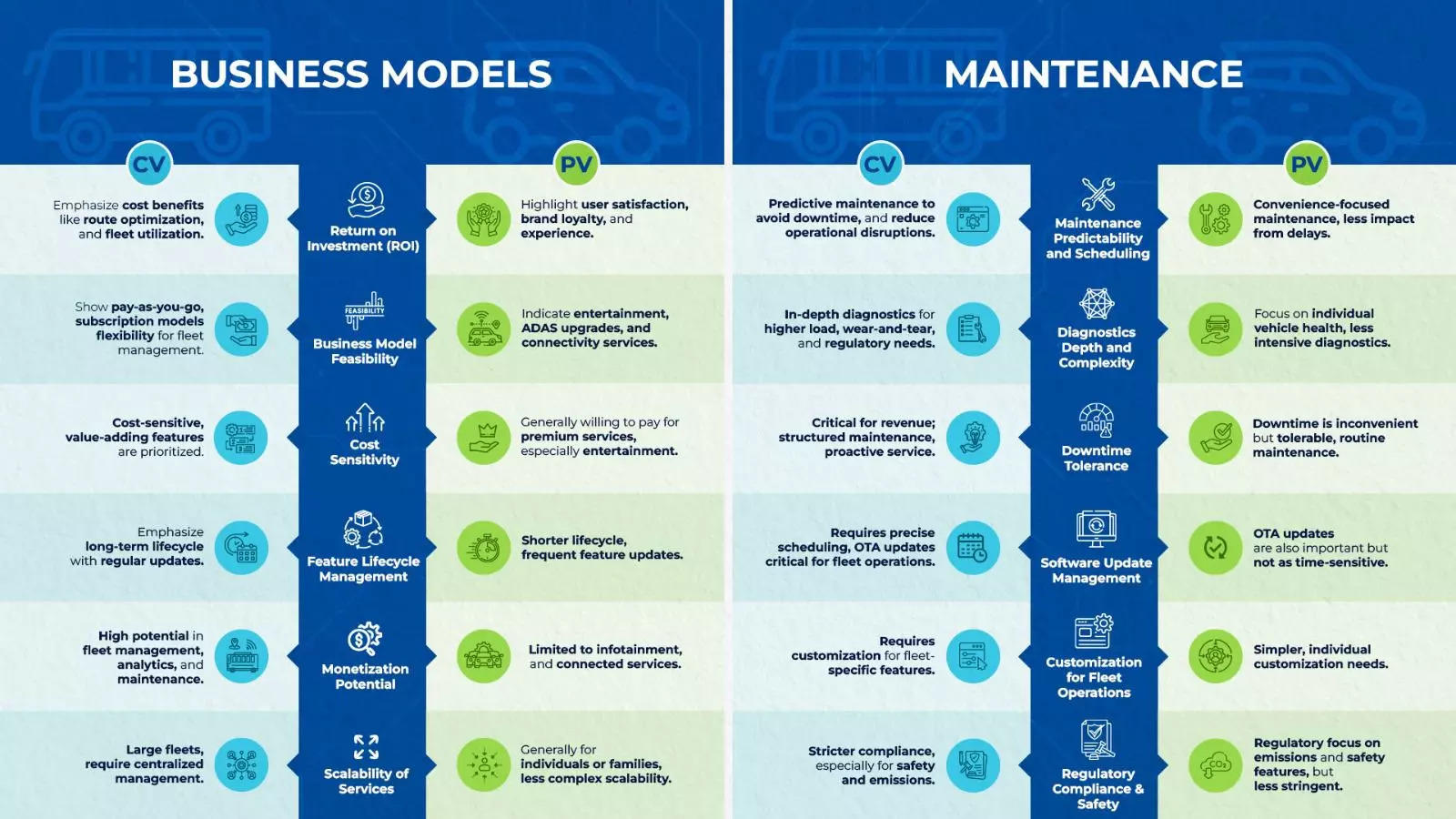
Software-defined vehicles (SDVs) are already creating ripples in the automotive industry, especially among passenger vehicles. But what about the commercial vehicle (CV) sector? For an industry fueled by tight margins and focused on total cost of ownership (TCO), the adoption of SDVs is both a challenge and a golden opportunity. It’s essential to explore how SDVs can revolutionise commercial fleets and enhance profitability for fleet operators and OEMs.
The promise of SDVs for commercial vehicles
For fleet operators, SDVs offer much more than the buzz of innovation. Think of reduced operational costs, improved efficiency, and even new revenue streams. However, making this a reality requires a practical, ROI-driven approach, especially in cost-sensitive regions like India. Over the next decade, SDVs are expected to transition from emerging technologies to standard practices, equipping the commercial vehicle industry with crucial digital connectivity and data-driven capabilities.
So, what does the road ahead look like for SDVs in commercial fleets?
Advanced fleet management: Predictive analytics could transform how fleet operators manage their vehicles. From fuel efficiency insights to proactive maintenance schedules, SDVs will help optimise every element of fleet management, extending the lifespan of vehicles and reducing downtime.
Autonomous capabilities: Full autonomy might still be a dream, but SDVs are paving the way for specific use cases like convoy driving or port logistics. Think of it as a stepping stone—controlled environments where automation thrives.
Dynamic customisation: With SDVs, OEMs can offer modular, software-driven configurations that are tailored to specific industries—whether it’s freight, construction, or waste management. Being able to adapt vehicles to different needs over its lifecycle, without costly hardware modifications.
Driver behavior monitoring: Integrated systems will allow fleet managers to monitor driver behaviour, ensuring more fuel-efficient and safe driving. This data-driven coaching could reduce incidents and save costs.
Over-the-Air Updates: OTA updates make vehicles smarter, more efficient, and compliant with changing regulations, all through a simple over-the-air (OTA) update. No costly hardware swaps, just seamless improvements that extend the vehicle’s useful life.
Digital twins: Real-time simulation and monitoring through digital twins will allow fleet operators to predict performance, simulate changes, and optimise for specific conditions. It’s like having a virtual model that helps maximise investment.

Navigating challenges from cost to compatibility
The commercial vehicle segment faces unique challenges in adopting SDVs compared to passenger vehicles:
Cost sensitivity: Fleet operators prioritise TCO above all. For SDVs to gain widespread acceptance, they must deliver a clear ROI—whether by reducing operational costs, increasing efficiency, or prolonging vehicle lifespans.
Operational Durability: Commercial vehicles endure harsher environments than their passenger counterparts. Any SDV technology integrated must be rugged enough to handle extreme conditions without compromising uptime, as downtime directly affects profitability.
Longer life cycles: Unlike passenger cars that are frequently updated or replaced, commercial vehicles often have longer lifecycles. SDVs must be compatible across multiple hardware generations to ensure these vehicles remain viable for years to come.
High initial investment: From advanced computing systems to cloud integration, the initial investment in SDV infrastructure is significant. However, the potential long-term gains in efficiency and reduced downtime make it a compelling case for future-focused OEMs and fleet operators.
Data privacy and security: As commercial fleets become increasingly connected, cybersecurity will be paramount. Ensuring data privacy, especially as data flows between vehicles and cloud platforms, will be a key differentiator for OEMs.
Building the future together
The future of commercial fleets goes beyond more powerful engines or improved fuel efficiency and is founded on digital transformation. SDVs are the key to unlocking new efficiencies, extending vehicle lifespans, and reducing operational costs. With careful planning and sustained investment, the CV sector can embrace this future, keeping one foot on the pedal of innovation and the other grounded in operational and financial viability. Together, we can drive into the future and shape a smarter, more efficient tomorrow.
(Disclaimer: Sandeep Terwad is Associate VP of Tata Technologies’ . Views are personal.)

















